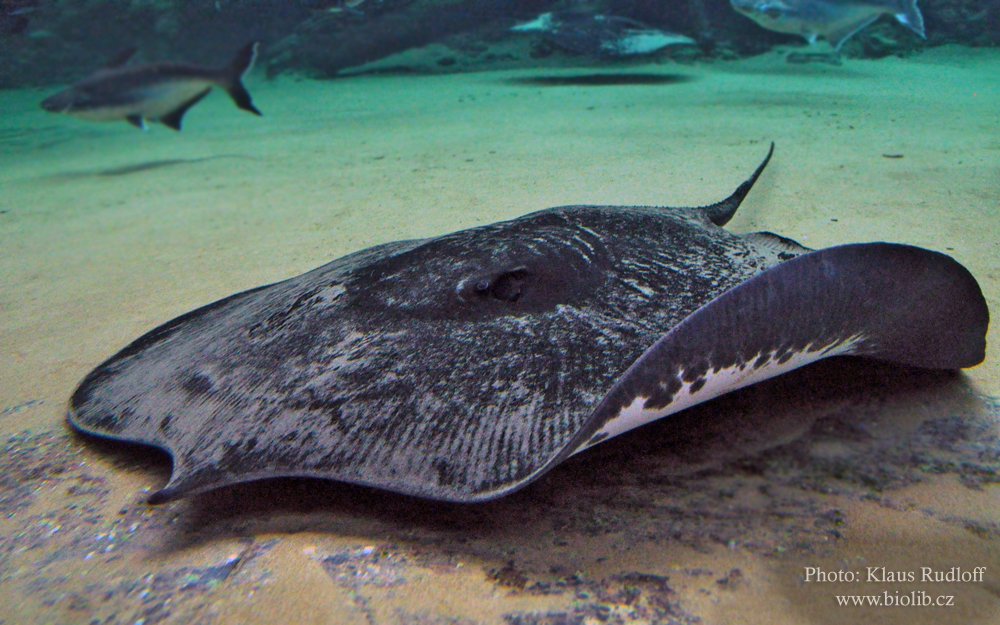Giant freshwater stingray
(Urogymnus polylepis)

Classification
General data
The giant freshwater stingray (Urogymnus polylepis) is a species of stingray in the family Dasyatidae. It is found in large rivers and estuaries in Southeast Asia and Borneo, though historically it may have been more widely distributed in South and Southeast Asia.
One of the largest freshwater fish in the world, this species grows upwards of 1.9 m (6.2 ft) across and may reach 600 kg (1,300 lb) in weight.
It has a relatively thin, oval pectoral fin disc that is widest anteriorly, and a sharply pointed snout with a protruding tip. Its tail is thin and whip-like, and lacks fin folds. This species is uniformly grayish brown above and white below; the underside of the pectoral and pelvic fins bear distinctive wide, dark bands on their posterior margins.
Bottom-dwelling in nature, the giant freshwater stingray inhabits sandy or muddy areas and preys on small fishes and invertebrates. Females give live birth to litters of one to four pups, which are sustained to term by maternally produced histotroph (uterine milk). This species faces heavy fishing pressure for meat, recreation, and aquarium display, as well as extensive habitat degradation and fragmentation. These forces have resulted in substantial population declines in at least central Thailand and Cambodia. As a result, the International Union for Conservation of Nature (IUCN) has assessed the giant freshwater stingray as Endangered.











